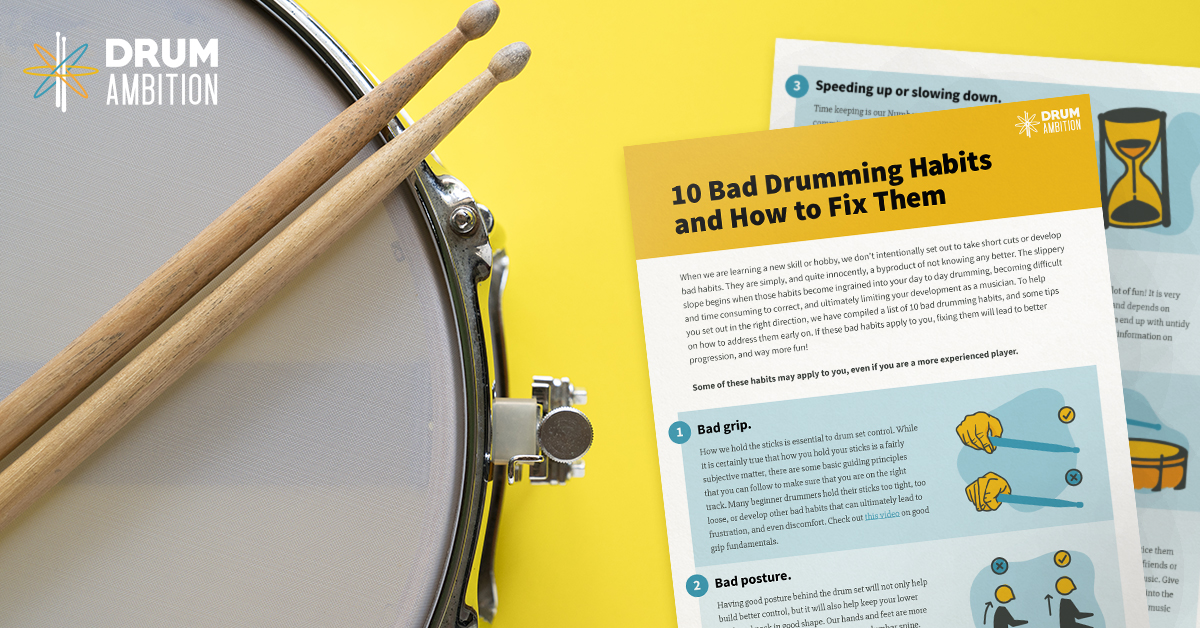Playing a smooth drum roll takes a lot of practice. While most people expect drummers to produce a smooth drum roll on-demand, it is one of the hardest things to do well on the snare drum. So, if you are a beginner drummer or even a drummer with more experience that has not yet mastered this technique - don't worry; you are not alone.
The reality is that developing a smooth drum roll is the culmination of several finely tuned fundamentals, including grip, finger control, dynamics, and an understanding of two essential drum set rudiments (single and double strokes). Firstly, there are two main types of drum rolls - the single stroke roll and the double stroke roll. You may also have heard of the terms pressed roll, multiple bounce roll, and buzz roll, which are essentially variations of the double stroke roll.
Helpful related articles.
How do I drum faster? Why speed is a byproduct of control.
Are the drum set rudiments important for beginner drummers?
Our Founder and Presenter, Simon DasGupta, remembers the first time he developed drum roll anxiety.
"I didn't study drums at school, and I didn't have a good teacher to point me in the right direction until I was in my twenties. Yet in the mid-1990s, I was playing a residency on a cruise ship, and as part of a game show, I was asked to play a drum roll. With no time to think about it and somewhat terrified, I took the easy way out and played a single stroke roll on the floor tom. It was impactful, and it did the trick without any blushes. At the same time, I was fully aware that I had not developed the technique to play a smooth roll on the snare drum, and I set about changing this - something that would take a long time to develop and still something I regularly work on."
Five videos on Drum Ambition will help you develop a good drum roll. The first video ("One Video That Every Beginner Drummer Should Watch") is free, and you can watch it here. Fine-tuning your grip is the first step in developing good technique and is essential to playing anything well on the drums, including a smooth drum roll. Spend a reasonable amount of time developing your grip before you attempt to practice a drum roll and incorporate this into your practice routine, even if just for a few minutes a day.
Once you have watched this video and are ready to move on, a further four videos are essential viewing to develop a good understanding of how a drum roll will come together. You will need a Drum Ambition subscription to view these.
- Special Feature Video Part 2 - Developing Finger Control.
- Special Feature Video Part 5 - The core four rudiments - Single strokes.
- Special Feature Video Part 6 - The core four rudiments - Double strokes, slow.
- Special Feature Video Part 7 - The core four rudiments - Double strokes, fast.
The best advice we can give you in developing a smooth drum roll is to manage your expectations. Just like soloing and implementing drum set rudiments into your day-to-day playing, a roll is the pinnacle of control and can take months and even years of practice and fine-tuning. The good news is that if you follow the tips in the videos and incorporate them into your practice routine, you will start to move in the right direction. Working with a practice pad can help you develop this technique without having the rest of the drum set to distract you.
We are here to help!
If you have any questions about this article, please feel free to email [email protected].



